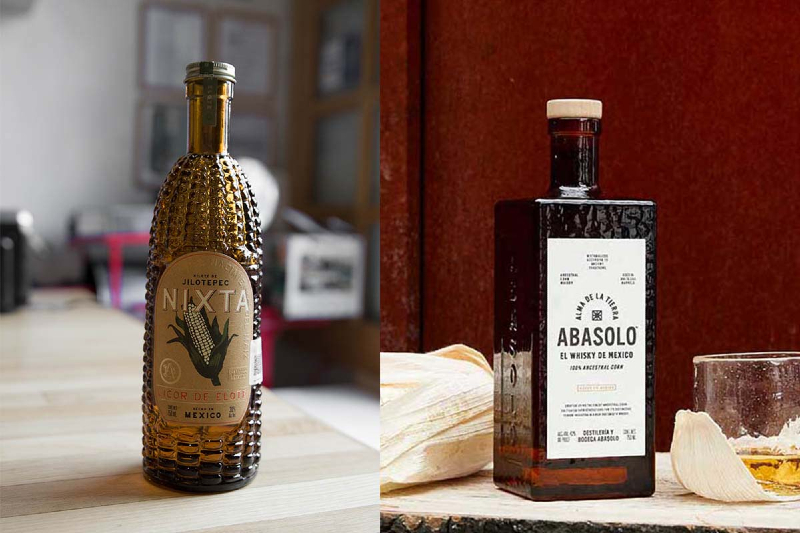
Around 10,000 years ago in southern Mexico, a wild grass dubbed teosinte (grain of the Gods) was cultivated by Native residents. After three or four thousand years, it began to grow into what we now recognize as a corn cob. In modern time, the ‘mahiz’ grain that started essentially as a weed in ancient human history, is represented in hundreds of different shapes, sizes and colors across the world.
Thanks to the Destilería y Bodega Abasolo, in the high hills of Jilotepec de Molina Enríquez, north of Mexico City, Cacahuazintle corn is represented as a whiskey (as of 2020) for the first time since those wild grasses were first harvested by long-forgotten peoples.
“Our whole purpose was to showcase the raw material that is native to Mexico,” Abasolo brand ambassador Cesar Sandoval said. “Corn is a symbiotic relationship. We have to take care of each other. The real question that we ask ourselves is: did we domesticate corn or did corn domesticate us?”
In order to represent ancestral, non-GMO corn and express it in its fullest way, Abasolo sampled more than 15 strains of corn and found Cacahuazintle corn to be the most flavorful. Harvested corn then undergoes a 4,000-year-old traditional process called nixtamalization in which the corn is soaked and cooked in an alkaline solution (usually a lime bath), washed and then hulled, uncovering the deepest notes of this ancestral ingredient.
Abasolo’s ‘destilería’ (the first-ever distillery dedicated entirely to Mexican whisky) is even higher, at 8,000 feet. High altitude weather, wet and dry, hot and cold, helps to give the whiskey character as it ages for two years, taking on notes of the land.
“This whiskey is very active. It really breeds and interacts with the Mexican terroir,” Sandoval said. “You can taste it. It’s this nice, beautiful light brown, amber color. We’re tasting Mexico. It’s truly a whiskey unlike any other in not only our process, but also in taste.”
Related Guides
Abasolo’s other product, Nixta Licor de Elote, is a liqueur whose taste and look stands out among any other product behind the rail. Conceived from tender young corn called ‘elote,’ Nixta is made with a base of half roasted corn and half raw corn and macerated in unaged Abasolo. The liquid is then mixed with a “base madre,” which blends nixtamalized Cacahuazintle corn, water and piloncillo — a form of unrefined cane sugar traditional to Mexico and Latin America.
Bottled in a beautiful brown bottle that’s shaped like a corn cob, Nixta gives off sweet-roasted corn notes that’s sweet on the palate with a creamy, almost buttered finish. The liqueur works well on its own as a digestif or over ice cream for a toasty, butter-flavored addition. Sandoval suggests adding Nixta to Tiki cocktails, creating corn daiquiris or substituting it for Grand Marnier to create Cadillac Margaritas. You can even shake a bit of Nixta and bitters together with Abasolo to create a corn Old-Fashioned.
“Nixta is one of these revolutionary products where you can add a little bit to anything and it’ll make it taste great,” Sandoval said. “I’ve dubbed it the bartender salsa.”
You can find Abasolo for about $40 and Nixta de Elote for about $30 at liquor stores throughout the United States or shop online at abasolowhisky.com.
Read More: Sierra Norte Mexican Whiskey



